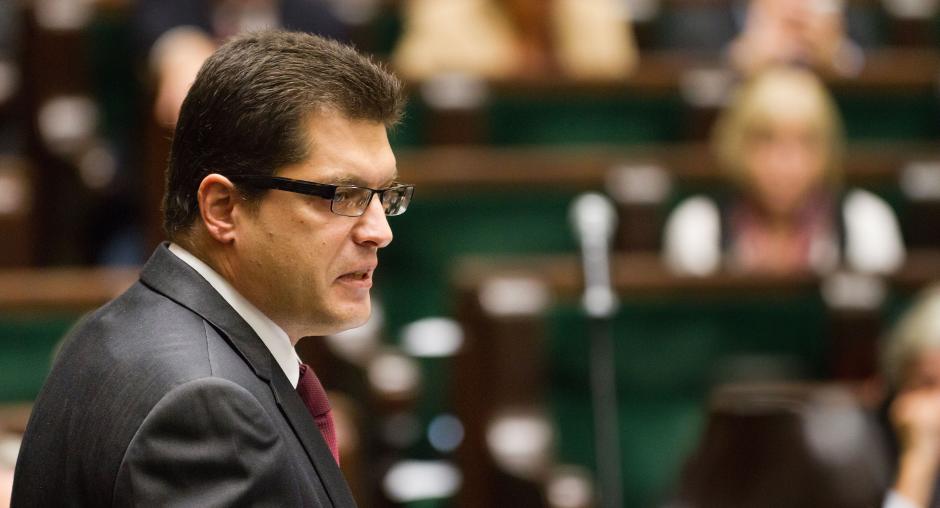Interview with Janez Lenarčič
Among the issues ODIHR deals with, election observation has a pretty high profile. This must have been interesting for you over the past five-plus years.
ODIHR’s election observation activities do often attract a lot of attention, but all of the work we do is important. I’m proud of the assistance our Office provides to participating States in developing democratic institutions, in strengthening the rule of law, in promoting and ensuring the enjoyment of human rights and fundamental freedoms, as well as promoting tolerance and non-discrimination. Our efforts to help improve the situation of Roma and Sinti are also very important.
As for elections, over my time in this post I have taken part in more than 30 observation missions across the OSCE region; I can’t say that I’ve personally observed from Vancouver to Vladivostok, but I’ve come close. The work is sometimes difficult, but it is also very rewarding. It’s been an opportunity to see how many different electoral systems operate, and to play a role in improving them.
The OSCE groups together 57 participating States, with different histories, traditions and forms of government – and different ways in which these governments are elected. Doesn’t this pose a problem for ODIHR in its election observation activities?
You’re right – no two electoral or governmental systems are the same. Members of parliament of some countries, for example, are elected based on proportional representation. In others they are elected directly in individual constituencies. The choice of system is up to the government and people of the country in question.
What these countries all have in common, however, is their OSCE commitment to the idea that genuine, democratic elections are the basis for the authority and legitimacy of all democratic government. Whatever system of government is chosen, it must comply with fundamental standards for democratic elections, in particular the right to vote and the right to stand in elections. It must ensure that the will of the people is, indeed, the sole basis of the authority and legitimacy for those in government. These are the key standards that guide ODIHR’s election observation work, in line with its mandate.
So your Office’s job is to determine whether they meet these standards?
ODIHR’s role is to provide them with recommendations on how their electoral processes can be improved, in line with these standards, and this is what we do in our final reports. The assessments produced on the basis of objective observation determine where there may be shortcomings and where improvements can be made – there is no such thing as a perfect election. These standards are set out in a fairly detailed manner in the OSCE Copenhagen Document, as well as a number of other important documents.
And the observation process is the same for every election?
The methodology we use is the same for every election. It is based on a determination of the added value an observation activity can bring for the electoral process in the country in question. This determination is made on the basis of a needs assessment mission sent to the country to meet with representatives from the authorities, political parties and/or candidates, as well as with representatives from civil society and the media. The information gathered during the mission forms the basis for a recommendation on what format of observation activity, if any, would bring the greatest added value.
In a world of infinite resources, financial and human, there would be no need to make such a determination. In the real world, however, we have limited resources, and it is our responsibility to provide the broadest and most effective assistance in improving electoral processes in the OSCE participating States within these constraints.
Nevertheless, every ODIHR election-related activity, whatever its format or size, is always conducted in strict compliance with the principles of election observation agreed on by all OSCE participating States: independence, impartiality and professionalism. There is no political or any other hidden agenda. We approach each and every election without bias or pre-conceived views.
What comes next?
Whatever has been identified as offering the most added value – election observation mission, limited election observation mission, election assessment mission – there are a number of different formats. The mission bases its findings and conclusions exclusively on information gathered in the field by a core team of analysts and long- and short-term observers. All of this information is duly scrutinized, analyzed and verified. We don’t consider hearsay or second-hand information.
We then provide an assessment of the election process and, based on that assessment, our final report provides the country in question with a set of recommendations on how that process can be improved.
What are the reactions to these recommendations?
They can differ. In the majority of cases, we have been able to work with governments and other authorities on a follow-up to our reports, providing technical expertise to help them with the implementation of recommendations. This is something we’re always ready to do.
There are instances, though, where the political will is not there to implement the recommendations. It’s unfortunate, because the bottom line is that all of these countries have committed themselves not only to invite ODIHR to observe, but also to follow up on the recommendations in election observation reports. When this doesn’t happen, it’s not just a failure to fulfil the promises all states have made within the OSCE, but also a failure to live up to the responsibility they all have to protect and promote the democratic rights of their voters.
Read more!
Living up to commitments?
ODIHR has released an analysis of its reports on 55 elections from 2010 to 2013 against commitments participating States have made. Review of Electoral Legislation and Practice in OSCE Participating States available at www.osce.org/odihr/elections/107073
New voting technologies
Download ODIHR’s Handbook for the Observation for the Observation of New Voting Technologies at www.osce.org/odihr/elections/104939

